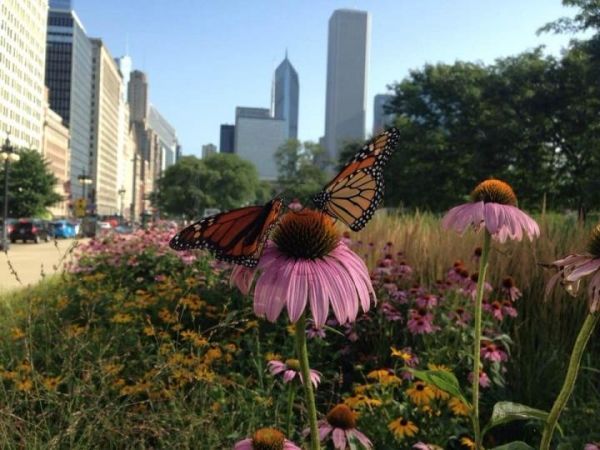It’s easy to think of cities as being the enemy of nature. When we talk about escaping the skyscrapers and car horns, we have visions of breathing in fresh mountain air while hiking through forests in mind. But for Monarch butterflies, the busy cities we know could be key to their survival.
Monarchs, with their striking orange and black wings, are some of the most well-known butterflies in the US. But the Monarch population has declined over 80% in the last twenty years, and scientists warn that as milkweed—the only plant Monarchs can lay their eggs on—continues to disappear across the United States, these butterflies could disappear too. Two new studies in the journal Frontiers of Ecology and Evolution show that one of the most important things we can do to save the Monarchs is plant milkweed in cities.
“Metropolitan areas actually matter for wildlife conservation, and that’s especially true for pollinators like the Monarch that can survive with very small patches of habitat,” says Abigail Derby Lewis, a senior conservation ecologist at the Field Museum and lead author of the paper Does Nature Need Cities? “There’s an assumption that cities are not important places for plants and animals, but that’s because no one had looked at these landscapes in a systematic way, or at the collective impact from many small-scale plantings across large urban geographies.”
Read more at Field Museum
Image: Monarch butterflies in downtown Chicago. (Credit: Abigail Derby Lewis, Field Museum)


